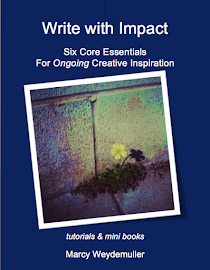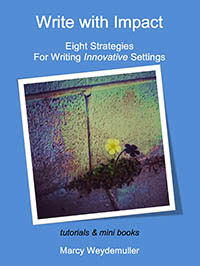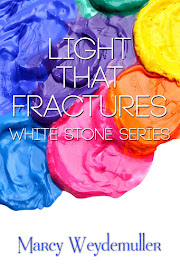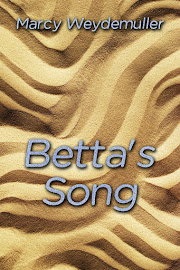Thursday, December 29, 2016
Overview Plot Development: Patterns Part One
Workshop: An Introduction to Writing for Children and Young Adults
“Plot is an arrangement of events, an ordering of raw life.”
Ronald
B. Tobias
Tobias sees plot as a process and not an
object, but does note that there are many patterns that grow out of the
process.
According to Tobias there are plots of the
body (forza) or plots of the mind (forda).
Is it an action story, an adventure that
relies on doing? Or does your story deal more with the inner workings of
character and human nature?
The mechanics of the story is shaped by which
plot is chosen. Plot driven, or character driven? Patterns of action, or
patterns of behavior?
Often genre fiction will have a straight
line, no flashbacks, limited sub-plots, whereas mainstream has multiple plot,
complications and sub-plots, and may use flashbacks.
There are several opinions as to how many
plot patterns there are and how they can be interpreted. The very basic two are considered to be
‘hero/heroine leaves town’ or ‘a stranger comes to town’.
Tobias has an outline for both 20 Master Plots and 36 Plot Patterns.
Victoria Lynn Schmidt, Ph.D, lists 5 Dramatic Throughlines, 6 Conflicts, and 21
Genres in her book Story Structure
architect. From that foundation she develops 55 Dramatic Situations.
Regardless of what style pattern you choose
there are four basic characteristics that each requires according to Tobias.
1.
Study the pattern that best suits
your story
2.
Determine what the dramatic
phases of the pattern are (usually three or four)
3.
Translate each dramatic phase of
the pattern into an action.
4.
Begin the scene as late possible.
Below are some examples that Schmidt gives
for a character succeeds Throughline.
Action Steps:
1.
Choose
two different ways for your character from the list below.
2.
By
what means do they use to accomplish their goal?
1.
Problem>Solution
2.
Conflict>Peace
3.
Danger>Safety
4.
Question>Answer
Share: Which one do you prefer and why?
Read deep, marcy
Thursday, December 22, 2016
Overview Plot Development: Sequel
Workshop: An Introduction to Writing for Children and Young Adults
Sequel, according to Swain, is a unit of
transition that links two scenes. Its purpose is to translate the disaster into
a new goal to telescope reality and to control tempo. This is the aftermath. What
holds sequel together is topic.
Feeling is the common denominator in sequels
and the focus is on the character’s dominant feeling. Scenes tend to hold
interest and the sequel gives plausibility so therefore they can be different
in different genres. It’s not meant to be a formula, but a guideline.
A sequel may be a few lines, or a whole
chapter, depending on the genre and the external/internal priorities of the
story. For example, “Kristy hesitated at the tunnel entrance as she heard the
pounding footsteps grow closer. She had no other options. She pulled her hood
over her head and burrowed into it hoping it would protect her from the
spiders. She took a deep breath,
stepped inside, and closed the concealed door.”
A whole chapter version could involve a
flashback as to why Kristy is afraid of spiders or knows where the concealed
door is. It would be valuable if
the decision she makes at this point contains threads that could be explored
throughout the story. But if it’s
only needed as motivation and emotional decision, then short is sufficient.
Action may not require much in sequel—just
enough to give a credible reason/emotion for next step.
Back to motivation-response.
Scene: live through a scene—it’s the action; step by step with the
character.
Goal—conflict—disaster (new information received)
The
goal is the character’s decision to act. The new information shows failure (disaster).
Example:
John decides to ask Suzy to the
prom.
She says, “Oh, I’m sorry, I
already said yes to George.”
Sequel:
the decision making process, a bridge between scenes.
Reaction—dilemma—decision=new
goal
Example:
John forces a smile. “Well, I hope you will save me a dance.”
Suzy blushes, “of
course.”
Action Steps:
1.
Write a brief scene and
sequel—keep it short. Can start with either.
2.
In a book you’re reading this
week, identify a scene and sequel. Does it meet Swain’s criteria? Why or why not?
Share: What is your opinion of using
scene and sequel? Helpful or too structured?
Read deep, marcy
Thursday, December 15, 2016
Overview Plot Development: Scene
Workshop: An Introduction to Writing for Children and Young Adults
“A good story is an experience with people in which someone turns
a corner or a hair.”
Sidney
Cox
Scene-Sequel
A workshop I took with author Donna Fletcher
Crow helped me to grasp the concept by the way she set it up. I still refer to
my notes when I need a reminder.
Scene:
is External.
is the active action of the plot
is where the
character has a goal which meets conflict which ends in disaster.
Sequel:
is Internal
is the
reaction of the character in his/her POV.
What happened? How do I feel?
is the dilemma
for the character asking, What do I do now? What choices do I have? (to develop
this you can ask as a series of questions and see what is the motivation is for
each)
is
the decision/goal for next scene. (good if you can make an action)
There needs to be at least one scene—sequel
per chapter and sometimes three. Reader age and story question will guide that
decision. Sometimes the scene—sequel will work with alternating chapters if a
story lends itself to that style.
According to Swain, the scene is a unit of
conflict. It organizes conflict, telescopes reality, and intensifies them.
The big moments in the story are scenes which
give a blow-by-blow account re conflict. The purpose is to provide interest and
to move the story forward. Time unifies the scene-live through it. For example in
a fight scene that is going on the character will not usually take time here to
reminisce.
A goal in a scene is a decision to act by
your character. An implicit goal is of resistance. An explicit goal is of
achievement. Goals include possession
of something, relief from something, or revenge for something.
Then disaster can come in the form of new
information received, (airline is on strike) or an unanticipated third party
causes difficulty and forces the character to change goals (uninvited guest
shows up at party at the restaurant). Keep goals short term.
Action Steps:
1. Choose a
scene from a book you have been reading in your reader age category and track
the goals and big moments. Are they in sync?
2. Take one of
your own scenes and write it in two versions: one zoom-in and one zoom-out.
Share: Which
gives the most effective emotional resonance?
Read deep, marcy
Thursday, December 8, 2016
Overview Plot Development: Roadmaps
Workshop: An Introduction to Writing for Children and Young Adults
“Facts exist independently, outside people. But they have meaning
and/or significance only as we have feeling about them; react to them.” Dwight V. Swain.
Plot is a roadmap. Like other maps there are
several ways/routes to plan the journey. The rising line of tension grows out
of the characters as they struggle against reversals and recognition. The plot
can be simple or complex depending on the story question.
Scene Basics
Scenes are considered to be the basic
building blocks of story structure.
“It’s a segment of story action, written moment-by-moment, without
summary, presented onstage in the story “now.”…. It could be put on the theatre stage and acted out.” Jack M. Bickham
Within those moment by moment segments,
though, are a series of cause-effect or stimulus-reaction. Dwight V. Swain
refers to this as a motivation-reaction unit, which we looked at briefly in
Character Development. These units combine to become the building blocks of
scenes, the core motivation from cause and effect. The motivation
stimulus=character reaction: feeling, action, and speech.
The trigger can be anything, positive or
negative. “A motivating stimulus may come
to you on a level at which you aren’t even consciously aware of it.” It is
the why behind the how in your story, Swain says, that creates the situations
for an individual to make value judgments, by responding to facts with
feelings. We can’t control the way we feel—we just do. But in some degree we
can control action.
Dwight V. Swain wrote a detailed explanation
of a scene-sequel in his well-known book, Techniques
of the Selling Writer. And, according to Swain, writing in a series of
interlocked Motivation Reaction units gives the technical foundation to write
scenes, which is a unit of conflict unified by time. The struggle may be
emotional, or physical or mental, but there are no pauses. The scene completes
itself. He compares the moment by moment to a series of blows and punches as in
a boxing match.
Motivation Reaction Unit
Qualities:
2.
Needs to be credible motivation.
3.
Avoid dead ends.
4.
Maintain credibility.
5.
Keep aiming towards goal.
6.
Keep in mind main conflict.
7.
Create interesting obstacles.
Action Steps:
1.
Take
the motivations and goals that you developed for your character in the last the
last session and measure them against the M-R
unit.
2.
Fill
in any that are missing or need to be made stronger.
Share: Which was the most difficult to
identify for your age reader?
Read deep, marcy
Thursday, December 1, 2016
Overview Character Development: Story Question Part Two
Workshop: An Introduction to Writing for Children and Young Adults
“The deep tension…comes from impossible situations, situations
where there is no clear right or wrong, no clear winner or loser, no clear yes
or no.”
Ronald B.Tobias
What’s the Story?
Marion
Dane Bauer
1.
Ask what the main character wants and what his problem is.
2.
What will the resolution be? Achieve? (may realize desire is not
important)
3.
What is the climax?
When the character changes is when comes the
point of resolution. She needs to struggle and not just internally.
Ask so what? Richard Peck says, “need to throw characters into the deep end
and watch them swim out on their own.”
The hero must solve problem on their own.
Adults must be absent or silent to the resolutions.
Deal with subject matter that is appropriate
to the child’s age level. Understand a child’s sense of priorities or perception. One time a grandchild said
with pride that his dad had let him be alone at the park, which we knew was
impossible. In fact, his dad stood just a few feet away watching. But the child
felt ‘big’ because there was some space between them rather than being hand
held. His vocabulary though didn’t reflect the physical reality but did his
emotional perception.
The subject matter must be true to the genre.
An historical must stay true to the time period. Look at the motivations that
can occur.
Start in the middle of the story with action
& dialogue, no backstory upfront unless it is crucial to the character and
must still be an active emotional encounter. Connect us to the main character
immediately.
Who—what—when—where—why are timeless
questions because they are relevant.
The story answers the main question what happens
and this part must not be vague. Give specific answers, not only for the whole
book, but also for each chapter. Each chapter (and sometimes scene) has its own
mini story question. We’ll discuss this more next section in Plot.
As you are developing your options and focus
keep asking a lot of “what if” questions. And then what happened. These ideas
apply to developing conflict, the character development and the overall story
trajectory.
Develop Possible Story Questions
Make
a cause-effect relationship between your character’s behavior and his fate, his
deeds, and his rewards. Look at the various options.
Will
Joe get the girl?
Will
Joe get Ellen now that his arm is crippled?
Will
Joe want Ellen when he finds out she just wants his money?
Story grows out of research and brainstorming
different possibilities.
Research—need to read ***. Are you visual?
Gather photos. Write out the scenes you see in your mind. Use brainstorming
techniques that work for you: journals, writer’s notebook, or idea file.
Consider three stages of story development.
First the General overall for ideas. Next
the Specific for genre, setting,
sounds etc. and third Detail for
atmosphere and accuracy.
Situations
Make an outline not even a draft but “a preparation” Tobias says as your framework to think in
.
1.
Start with a beginning.
2.
Pick an ending.
3.
Set some short-term possible
objectives for your character.
When
developing your story questions Swain suggest that the first step is to get the
idea of your story clear and it requires five key elements: character,
situation, objective, opponent, and disaster.
Then
suggests you ask the “will he or won’t he”
pattern.
Action Steps:
1.
Write a
brief sketch for a plot that involves a character in an external purpose and an
internal struggle (mental/psychological).
2.
List three or four turning
points, possible crisis points, from your story.
Share: Name one objective or disaster you
choose for your character.
Read deep, marcy
Thursday, November 24, 2016
Overview Character Development: Story Question Part One
Workshop: An Introduction to Writing for Children and Young Adults
“Stories help us see what is true, and that visions of truth are
nourishing to the human spirit.” Katherine
Paterson
Motivation-Response
As mentioned last week a story grows from the
character’s emotional core. What? Why?
Dwight V. Swain says a story is a succession
of motivations and reactions. Every story deals with specific instance. Even
sci-fi and fantasy are grounded in concrete realistic details.
An issue or stumble is not the event itself
but how the character perceives and reacts to it will direct the degree of
value to it. The character makes his own judgment and does this based on his
own feelings.
For example, a single fact can cause a
multitude of reactions such as a late BART or freeway delay. What are some personal
reactions being experienced? By the adult driving? By a child passenger? How
much of their emotional focus is tied up into where they are going, or a
situation left unresolved earlier that day that one or the other fear the delay
will be used to discuss the unfinished conversation?
For the story to work the reader has to care
about the character and care if he succeeds or fails or at least identify with
his need to succeed or fail. Therefore the reader identifies with the
character’s feelings and struggles.
Because something happens as in a previous
event #1, therefore Event #2 follows=cause and effect.
Cause
becomes motivating stimulus.
Effect
the character reaction.
The reaction contains three components:
feeling—action—speech. Sometimes one of them is implied rather than stated
outright.
Take some of the motivational sentences
you’ve been working on since the segment on tone and expand them according to a
deeper cause and effect that reflects and responds to your characters’ background.
Here is an
extended motivational two-sentence structure from Dwight V. Swain.
a) The first sentence is a statement that establishes, character, situation and objective.
“When
humans suddenly begin to grow to twelve feet height, John Storm tries to find
out why.”
b) The
second sentence asks a question while identifying the opponent and disaster.
“But can he defeat the traitors in
high places who want to kill him in order to make the change appear to be the
result of an extra terrestrial plot?"
As you work up your story questions, themes,
direction, and characters this form may become more succinct, but for now it’s
a good start towards creative possibilities.
Examine Possible Conflict
There are two dogs but only one bone.
Examine many possible layers of motivation. Keep
asking ‘what if’ questions to find the depth of motivation, both external and
internal.
Continue
to write up potential story lines.
Andrea
wanted to get a job at the ballet.
Then list twenty things that could go wrong.
Include creative offbeat possibilities.
Put your character between a rock and a hard
place, says Ronald B. Tobias. Forget easy solutions.
It applies from the youngest reader up. One
of my youngest grandson’s favorite books is Dinosaur
vs. Bedtime by Bob Shea. As you can see the story question/conflict is in
the title. The little dinosaur battles a pile of leaves and a bowl of
spaghetti, a big slide and talking grown-ups, J and many
other daily conflicts. And with every encounter he WINS! Except… guess what?
Action Steps:
1.
Practice reading openings or
titles. Notice what details jump first.
2.
As you read stories beginnings
write down what you think the story question is. See if it gets answered.
3.
Write down your possible story
idea in the question form.
4.
List twenty possible
obstacles—include really crazy ones.
5.
Write up in two as in
two-sentence structure from Swain.
Note: Also
look at the back cover or market introduction—does it fulfill its promise re
the story?
Share: What was the funniest obstacle you
wrote down?
Subscribe to:
Posts (Atom)








